From Art Journal 72, no. 4 (Winter 2013)
This conversation took place via e-mail over the course of autumn 2013.
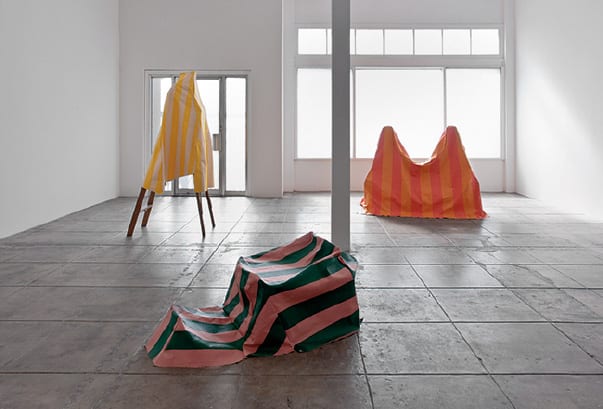
David Getsy: The context of a group of essays on sculpture, sexuality, and abstraction prompts me to start this conversation by talking about how we both write about the valence of sexuality in artworks and performances that would not, at first, seem to encourage it. While we’ve both written about explicit material too, I think a concern we share is how desire, the sexual, and the gendered operate beyond their straightforward depictions. We also both have a background in the study of the nineteenth century, in which discussions of and evidence for desire and the sexual were heavily coded.
Too often, the study of sexuality in art is dismissed if it departs from the iconographic depiction of sexual acts or bodies that are deemed to be erotically appealing. It’s one of the ways that those suspicious of or uncomfortable with queer theory, for instance, attempt to domesticate its critique—by claiming that anything other than the obvious is “reading into” or hopeful projective fantasy.
Jennifer Doyle: That complaint about “reading into” usually displaces a conversation about desire with a complaint about identity—it mistakes the effort to expand on how pleasure works for a taxonomical project, turning the queer reading into the abject shadow of art history’s most conservative projects. That worry about “reading into” invokes the inside as that which we should not access.

Getsy: With regard to our interests in sculpture and in performance, for instance, I think it’s crucial to remember that bodily relations immediately and inescapably activate questions about gender and sexuality. Historically, sculpture and performance art have shared this as a fundamental issue. Both rely on the viewer’s proprioceptive assessment of their copresence with the sculpture or performer. Such a staging of relations between bodies establishes sexuality’s potential to emerge within those relations. This can even be seen in the evidence of a past gesture or act, where the viewer must reconstruct the scene that left its trace, inhabiting the place of the agent that made it. The big question is how to characterize the capacity of the nonfigurative to manifest queer performativity in these mediums—whether that performativity is deployed by the artist, the historian, or the viewer.
Doyle: That problem is itself addressed by some queer formal practices. An example: My sister worked as a nanny to a woman who spent her summers with the designer Halston, who rented Andy Warhol’s estate on Long Island. I went to visit my sister there in 1987. There were built-in bookcases throughout the houses on the property. All of the books lining those shelves, however, were turned so that the spines faced the wall.
Walking into a room to see a wall of books that had been treated that way was bracing. It was a slap in the face. For, of course, those walls were beautiful—you instantly got it, the seriality of books as objects. It was a redeployment of books as home decoration, against their use as cultural capital. The gesture is a brutal thing, a total rejection of a certain kind of discourse on culture and value.
Someone said Warhol did that because when he bought the house it came fully furnished: he had no relationship to those books so he flipped them because they looked nice that way. I don’t know if that is true, or even if Warhol was the person who flipped the books around (it is also very Halston). But I’ve always thought of that gesture as a queer sort of formalism. It literalized the ambivalent place of narrative within contemporary art: to insist on the book as an object—not an art object, but as a block shaped by one formal logic and deployed in another.
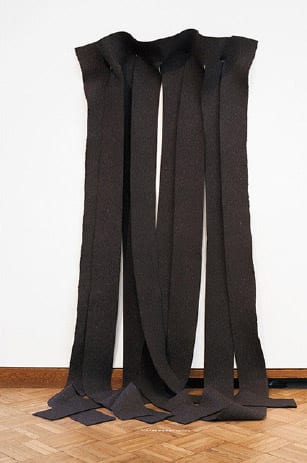
Getsy: It’s a great anecdote, hinging on a move of turning around and back-facing. It is also the kind of queer gesture that might easily be overlooked as inconsequential or quizzical for some viewers presuming such things as proper use and common sense. But for those viewers searching for sites of resistance to the enforcement of the normal and the supposed “natural,” the mutual recognition ushered in by identifying with this move could offer the embrace of solidarity. This gesture’s reversal is a refusal of common use, demanding an “unnatural” (just because unconventional) relation to the book as object. What’s fascinating for me in this is that the rear of the book still establishes a physical relation that makes it a sensuous object. Which is more tactile: the spine or the tips of the leaves? Indeed, the back-facing authorizes a kind of touching that one might never have imagined or privileged before. It also produces a kind of anonymous cruising in that the relation with the object occurs in willful ignorance of the book’s title, author, and cultural positioning. I wonder, however, if there isn’t a critical mass that needs to be made visible to prompt such reordered relations. One book back-faced wouldn’t do it, but a room full of them reminds us that it’s not a chance or a mistake—but a tactic and a signal.
Doyle: Absolutely. That turn to form, which can sometimes change what you think form is or can be, and the “poetic” can be that tactic, that signal. Take Walt Whitman’s relationship to Leaves of Grass, for example. The first edition (1855) is a gorgeously crafted thing. Its embossed green leather surface is meant to be fondled. He worked on revisions of this book as long as he was alive, and across all of the book’s editions you will find an awareness of the book as a material object embedded into his writing (“Whoever you are, holding me now in hand”), just as leaves were molded from the surface of that first edition. Queer readings of Whitman have taken us, interestingly, to considering his relationship to publication itself as part of his poetic practice: each edition of Leaves of Grass is a living thing, a manifestation of the poet’s desire and an occasion for intimacy. The multiple editions of this work express an intention opposite to that represented by Warhol’s library. There is, across his work, an expressed desire to make each book feel like a unique body—each reading, a unique encounter—but in the end, all books are the same. In the end, we all end up in the same body, which meets the same end (that awareness is also all over Whitman’s writing). Am I “reading into” Whitman by talking about his material practice?
Sexuality is one kind of relation among other kinds of relation. As a critic, I am drawn to how one mode of relation inhabits others (e.g., the sexual within the economic; or the economic within the sexual). Warhol’s library revealed how such a move might work through already existing objects. It manifested the turn to form as an attack—and as playful. If I saw that, it was because I was called out in my pretension (each book, somehow a sign of cultural accomplishment). That library taught me to think of literature as a material practice. And it taught me that a block is never just a block, especially when it appears as “just.”
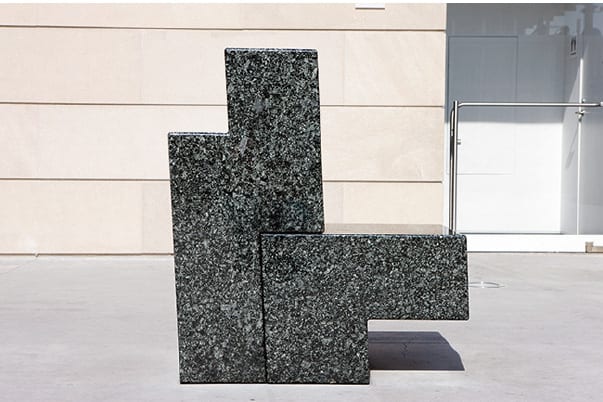
Getsy: For me, my recognition of the queer potential of formal tactics came from early interests in practices that established meaning through use. Primary among these were camp and appropriation. Both are ways to use images and objects that derail original intention, and my enthusiasms for them were driven by my involvement in queer activism when I was just starting out as an undergraduate. I went to Oberlin College, which has a tradition of activism and progressivism, so it was a very receptive place for this. However, it was geographically removed from the urban centers where such groups as Queer Nation and ACT/UP were concentrated. There was still plenty to be done, and our local efforts were energized and informed by the visual practices of these groups—most notably the work of Gran Fury. It was primarily through such agitprop that I came to know the nonassimilationist politics of queer visibility, and camp and critique were key parts of it. At the same time, this visual bent also had drawn me to art history, and my introduction to it was through the politically engaged teaching of the feminist art historian Patricia Mathews. Out of this mix of influences, I found myself engaged with what, at first, might seem like camp’s antithesis—Minimalism. What could gray polyhedrons and steel and plexi boxes say to queer politics? For me, it was in the tactics they shared: the outright refusal of the rules of convention and medium (“neither painting nor sculpture”), the hyperbolic performance of those rules as a means of critique or parody, and—most of all—the shift of emphasis from maker to user. Even though there seemed to be little queer politics in Minimalism, I realized I could draw queer politics out of Minimalism, according to its own logic.
Doyle: I was talking to Ron Athey the other week, and he described that Minimalist aesthetic as “bitchy”—he said this with a real appreciation for it. I think that might be one of the meeting points you are naming.
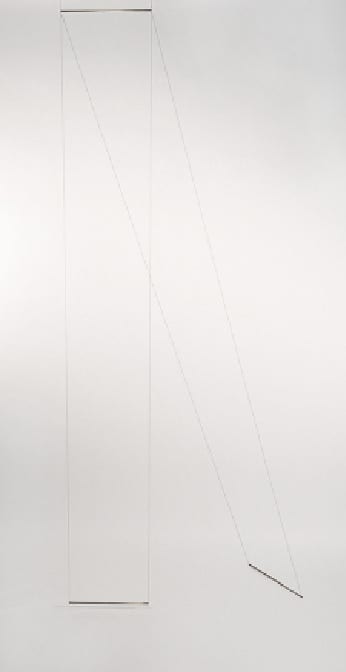
Getsy: I never thought about it that way, but it is. This also prompts me to make a further perverse connection back to camp’s origins in another famously bitchy movement—the nineteenth-century Aestheticism of Wilde, Whistler, and the like. From certain perspectives, the attitude of Minimalism shares quite a lot with Aestheticism’s self-righteous refusals of necessity, of the quotidian, and of content. At the time, many pitched “art for art’s sake” as urgent, political, and enlightened. Oscar Wilde could write both “The Soul of Man under Socialism” and “The Decay of Lying,” much as Minimalist artists such as Carl Andre and Donald Judd understood their production of nonfunctional, nonreferential objects as informed by politics. (To follow the comparison, this would make Robert Morris the Whistler of the 1960s—think of the mockery of “Specific Objects” he undertakes in the original layout of his parodic text “Notes on Sculpture III.”)1 Seriously, though, there is something powerful in Minimalism’s move of denying the artist’s hand and the concomitant refusal of the artwork as an autographic expression of the artist’s psychology or, indeed, as referential in any way. Instead, Judd, Andre, Morris, et al., opened the meaning of the sculptural encounter to viewers and their real-time spatial and bodily relations. That relinquishing of control becomes unruly because it places value on the audience as a source of meaning. Camp is similarly an emphasis on use over original intention, and its politics are rooted in that rebellious capacity.
Doyle: I came to the shift from maker to user through feminist interventions in Marxist critical paradigms—like the intense formalism of feminist artists taking on questions of labor and reproduction (such as Laura Mulvey’s writing on film, the Berwick Street Collective film Night Cleaners, or Mary Kelly’s Post-Partum Document). Ideologies of sex/gender are written into that separation, production/consumption; and they are written into the fantasy of absolute autonomy that is one of sexism’s foundational moves—the fantasy of that autonomy depends on the disavowal of reproductive labor of all sorts. Ideologies of race have a similar but not identical shape: the vision which demands that a person’s being is reducible to what they are (as if the latter could be known)—the grammar of the object, the radicalization of that grammar.
A queer/feminist critical take will track that; queer/feminist art practices will hover over the thingness of the body as a way of exploring the weight and history of that body, as a way of exploring the politics of making bodies into things, and things into bodies. It’s a joy to teach the work of artists who do this—Warhol, but also, say, Senga Nengudi (who uses material, like pantyhose, to make a sculptural object act like skin without being skin), or Linda Bessemer (who makes a painting act like a towel or a belt, by lifting paint from the canvas). We do not encounter those works in isolation: we bring a history of sensation to them. Our familiarity with the poetics and politics of objectification (especially as something that we do, as something that happens to us) is a part of the story of how we engage with, respond to the object. We can experience those things as living and having agency. Sometimes they push back. But to speak to that as a critic, you have to let go of the demand that every story you tell about the object be about Art— or at least, you have to let go of that as the point, the argument. To say a work of art is about Art as a category is not an argument, it is an observation—just as is the declaration that a work is about “race” or “sex.” A lot of the resistance to antiracist or queer critical theory in art history and criticism is a dispute about what kind of argument one is allowed to make within art history. The critic is accused of misusing art-historical tools, and artists face more foundational complaints in the declaration that they, in essence, aren’t artists at all.
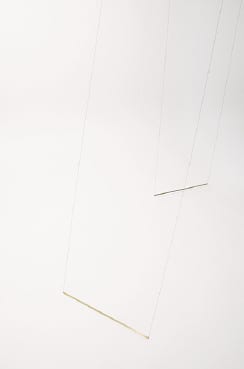
Getsy: Underlying these anxieties about “reading into” is a defensive and pernicious desire to uphold the normative. Immediately suspect are any interpretations that make use of artworks or ideas to carve out semantic space for differently identified individuals to adopt those artworks. To prompt us to see a material or an object in a different way—against or to the side of its intended use—is a queer tactic. That “disavowal of reproductive labor,” as you said, is a refusal to accept (or to only accept) the prescribed functions of objects or materials. Knowingly, willfully using something wrong has been deployed by many as a tactic for allegorizing normativity’s disavowal of its own partiality. In this vein, it’s important to remember that camp is never just about fun. It values the devalued, and its energy comes from its rejection of “commonly accepted” worth. For this reason, the object or image appropriated as camp becomes a site for the interrogation of the ways in which cultural and economic values are assigned. This comes from the brazen and intentional misuse and misreading that camp perpetrates. Camp’s valorization of culturally derided objects and images upholds the weak as the strong, the bad as the good, and the useless as essential. Its love of obsolescence is a form of resistance to normative values. Camp tactics emerged out of Aestheticism’s refusal to instrumentalize art as productive or illustrative, preferring instead to emphasize experience and form (Walter Pater) or to flout commonly held values by playing up the contingency of meaning (Wilde). To invoke again a perverse analogy to Minimalism: for everything else it does, Minimalism also produced intentionally useless things that refused to be anything other than themselves. As Fried famously narrated, these things merely waited for the viewer (like a person in “a somewhat darkened room”), locating their meaning, differently, in each new phenomenal encounter. 2
Doyle: That’s the best part of that essay—the cruising scenario he invokes to describe the encounter with that kind of object. Math Bass plays with this. Bass’s sculptural objects may appear as covers—overturned flower pots and strange duvet-like things (made of canvas and sometimes painted to look like animal skins). In the encounter with Bass’s work, it feels like you are discovering an object hiding something from you (an object containing a thing). These sculptures feel both familiar and strange—uncanny in the way one is haunted by the ordinary. Bass’s work is queer like those books which have turned their backs on us, teasing us.
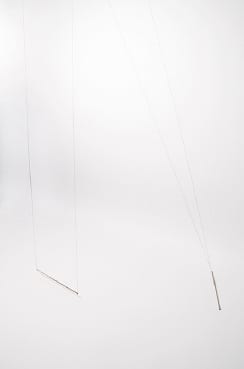
Getsy: In order to critique a similar coyness of Minimalism, Fried drew out its solicitation of the viewer—its “need” for the viewer. What continues to be so useful about that essay is the way that it outlines the affective intensities possible when a viewer engages with even the most reductive geometric form. Minimalist objects trade on bodily confrontations and relations, and they do not foreclose possibilities the way a rendering of a particular body would. In many ways, it’s a more concentrated form of what happens with abstraction’s openness more generally. This is what I am really interested in these days—how abstraction is being used as a resource by young trans and queer artists because it allows for a less prescribed capacity for artists and viewers to see themselves in it. Such a dynamic has a historical source in the art-theoretical debates of the 1960s from which literalist abstraction emerged. This is what I’ve been working on recently with the history of sculpture—how the decade that saw the dissolution of the statuary tradition into the expanded field of sculpture nevertheless held fast to bodily evocations and solicitations that buttressed its embrace of abstraction and objecthood.
Another early experience I keep coming back to when I’ve been thinking through these ideas: During those same years, I worked at the Allen Memorial Art Museum, which has a great collection of Minimal and Postminimal artworks. Dealing with these sculptures as material presences and not just as illustrations of ideas alerted me to the very real relations I could have with these sculptures even though they weren’t figurative or even representational. The stubborn recalcitrance of Richard Serra’s Two Cuts was physically real as was the frailty of Eva Hesse’s Connection. Here materials were being used for their qualities but without instrumentalizing them as “productive” or “useful.” Steel, fiberglass, felt, fluorescent lights all became particular and odd when they were severed from the obligation to work for something—to be useful. This made them strange and bodily present in a different way. For me, this is one of the great lessons of Postminimalism—the bodily evocations of materials allowed to be themselves. But most of all, I remember that for a few months I was tasked with monitoring a Morris felt work that I had included in an exhibition I curated. Every few days, I had to plunge my gloved hands into it in order to rerandomize its slackening tendrils. During those moments, the sculpture was intimate and incontrovertibly just material at the same time. Despite its stubborn literalism, it became bodily. That was a great lesson in sculpture’s physicality and the corporeality it could incite. I began to see sculptural presence as a site where unauthorized or dis-allowed relations could erupt.
Doyle: Yes. The way things act on and organize us—there is so much for art criticism in recent scholarship on the agentic dimensions of things, on vitalism.3 That representation of queer scholarship as “only” about identity (as if what that meant were somehow simple or obvious) erases this feminist and queer attention to certain kinds of labor and attention, ways of working with things—that physicality, that kind of maintenance, sculptural housework. It disavows the erotic, as a language or a set of affects animating and inhabiting this kind of work, but also as a mode of knowing (or even being known by) the object.
Hearing you speak to the poetics of domination in Scott Burton’s work, for example—and connect that to a way of being in the world, to the history of a creative community—without reducing the work to a sign or symptom, as if you could just decode it.4 Your writing has really helped me to imagine that I can bring objects into my own writing. I didn’t think I would ever enjoy Postminimalist work like Burton’s benches—but now the erotics of economy, of restraint and rigor is the first thing I find myself seeing. Or perhaps it’s better to say that your work has helped me to grasp the poetic dimension of our encounters with objects. It has helped me to enjoy them.

Getsy: Burton’s largely forgotten work of the 1970s has been a long-term research interest, and I’m working on a book about his performance art from that decade. He is a great example of an artist who infused a seemingly formalist and innocuous practice with sexuality, and there is a lot to be said about his furniture-as-sculpture meant to be used. But what is interesting about an artist like Burton is that he draws out the erotics that are present in the logic of Minimalism and its bodily address to (and reliance on) the viewer.
I’ve been emboldened in my historical work on the 1960s and 1970s by what I keep seeing in studios today. As I said earlier, one of the developments that has been exciting me most has been recent work by trans and queer artists who appropriate Minimalism and abstraction as resources for envisioning new ways to inhabit the body or to give an account of the self. For instance, the sculptor Jonah Groeneboer’s use of techniques we associate with Fred Sandback to create works that address the body directly through absence, verticality, and suggestion. Unlike Sandback’s more spatially dominating ersatz walls and architectural elements, Groeneboer’s works more often approach a human scale but refuse to settle into a single profile or faciality (let alone a barricade). Instead, they use the transparency of the outline to complicate the idea of a proper or a comprehensive view. They take on the proportions of full-length mirrors, and they stage figurative multiplicity through the interpenetrating layering of possible (and competing) contours and forms that appear to be different from every perspective in which we try to settle. They end up visualizing transformation and successive states in a way no figurative representation could.
One of the reasons I thought to have this conversation with you is because of your new work on athletics.5 As in what I’m doing with sculptural abstraction, you’re taking on a topic that doesn’t directly figure gender or the sexual or in the iconographic sense. Nevertheless, the tactics of queer and feminist interpretation allow you to analyze the economies of sport in a different way. How does this new work relate to your other books on sexuality and on emotion?
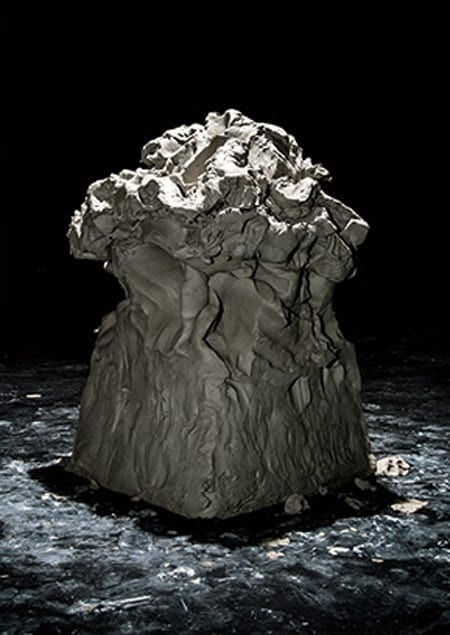
Doyle: I’m using “the athletic turn” as a working title to signal affect and form as part of this project’s story. The book begins with the observation that artists are a part of the sports world; many work from an athletic practice and engage the sports world, often critically. My writing on this subject moves in two directions. One pays attention to those artists working with sports who are not collaborating with its worst institutions—Heather Cassils’s citation of combat sports in the performance Becoming an Image (in which the artist punches a large plinth-shaped slab of wet clay), for example, in contrast with Douglas Gordon’s collaboration with Spain’s biggest commercial soccer league and with one of the world’s biggest celebrities (Zinedine Zidane), or Harun Farocki’s collaboration with FIFA [Fédération Internationale de Football Association], one of the world’s most corrupt and vile organizations. Many artists make work that has something to say about physical practice, sport, and play—work that is feminist, anticolonial and queer. Which is, of course, why they won’t end up on the payroll for Nike, the IOC [International Olympic Committee], or FIFA.
But there’s another side to this project. I keep returning to Caster Semenya, the South African runner whose sex became the object of international attention when she won the 2009 world championship in her event (the 800-meter dash). It is the question of her speed rather than her gender that interests me. Her speed makes her extraordinary (she is not the fastest ever, but she is among the three fastest competing today). In response to that speed—to what that speed looks like—a whole world organizes itself into a conversation about sexual difference, whole new protocols are developed for establishing what makes an athlete female. (Now that’s reading into!) All women who mark the limit of women’s capabilities will also mark the edge and the end of the category “woman.”
Here a black woman seems to become flight itself, and seems to become not-a-woman in that performance. This is not a transcendence of the body—it is perhaps a glimpse of what the body is, when loosened from discourse—that loosening is both an ungendering, and very “gendery” (a word Eve Sedgwick used once to describe places where there is a lot of gender). The black body has a specific relation to that ungendering—at the heart of enslavement is an abstraction, abstraction sits at the core of capital. (Keith Piper took up the question of the politics of speed in relation to liberation and national fantasy in a recent project exploring Jamaica’s great sprinting tradition.) The athletic turn can engage that site of violence and undoing, and artists are helping me to get there in my writing.
Getsy: I’m attempting something similar in my work on abstraction and sculpture in the 1960s by exploring how artists of very different sorts collided abstraction with bodily metaphors to produce work that called for an account of genders as successive and mutable. For me, this is an archival project just as much as an interpretative one, and I’ve been looking at texts and archives anew through the lens of transgender studies and queer studies to find evidence for moments of recognition of gender multiplicity, mutable morphologies, and successive states of personhood.
My new book Abstract Bodies will investigate how genders and sexualities manifest in patently abstract, nonreferential, and nonfigurative sculptures. I do this through a cluster of in-depth case studies of artists such as David Smith and Dan Flavin to chart some ways that nonnormative acounts of genders can be inadvertently generated by artists for whom such queer positions would be anathema. Sometimes, this occurs through their works’ subsequent uses by queer viewers and sometimes from their own paradoxical commitments to abstraction and to bodily metaphors for their practice. For me, it’s an argument about the larger relevance and urgency of queer and transgender theory by focusing on their inadvertent visualizations by abstract sculptures that vex the nomination of the “human.” This is how I reread an artist like John Chamberlain, for instance, whose work would never be expected to say anything engaging or constructive to transgender or queer theory. Nevertheless, his insistence on a sexualized metaphor for his particular sculptural practice (“fitting” of parts) compels an account of genders and sexualities in relation to the nonfigurative. At one point, he even conceded this when he was asked (by Henry Geldzahler) about how his works seemed simultaneously masculine and feminine to viewers. Chamberlain’s response was as simple as it was unexpected for him: “Everybody’s both.”6 This wasn’t an offhand comment. Rather, it registered a long-standing logic he had put into his material and artistic practice. It’s not about his own identity at all, but it is about the patterns he committed to put into his practice and the ways he talked about it. An account that draws out this capacity of his work ultimately allows for a deeper discussion of his practice and offers a wider set of ways that viewers and later artists can invest in it. (This was brought home to me when I learned in 2012 that an early essay version of the Chamberlain chapter of my book became a guiding text for the first exhibition of the Brooklyn-based feminist and queer curatorial collective Garden Party/Arts.)7
One can argue for different politics than those intended by the artist while still being grounded in the direct history of the art object, its form, and its reception. While sexuality is a central issue in my book, the larger aim is to identify accounts of genders’ mutabilities and transformations arising from the collision of abstraction and metaphors of personhood or the body. The perspective of transgender studies allows one to better recognize and analyze those historical moments when questions of gender’s multiplicity erupted. That history is there, but has been occluded or obscured. Rather than the derisory “reading into,” such a critical or historical practice aims to make semantic space and to establish divergent sites of identification for subsequent viewers. Such rogue interpretations are urgent and ultimately end up telling us a lot about the artwork itself.
Doyle: This is some of the most exciting work in transgender theory for those writing about art and performance—what sex becomes when practiced or expressed or manifested through things like speed, gesture, plasticity, or texture. It’s great to feel queer theory push our critical practice in new directions.
This conversation originally appeared in the Winter 2013 issue of Art Journal.
Jennifer Doyle is professor of English and founding director of Queer Lab at the University of California, Riverside. She is the 2013–14 Fulbright Distinguished Chair at the Centre for Research in Transnational Art, Identity and Nation at the University of the Arts, London. Her books include Hold It Against Me: Difficulty and Emotion in Contemporary Art (2013) and Sex Objects: Art and the Dialectics of Desire (2006). She recently edited “The Athletic Issue”—a special issue of GLQ: A Journal of Lesbian and Gay Studies (2013) and is writing a book preliminarily titled The Athletic Turn.
David J. Getsy is the Goldabelle McComb Finn Distinguished Professor and Chair of the Department of Art History, Theory, and Criticism at the School of the Art Institute of Chicago. He also chairs the editorial board of the College Art Association’s journal The Art Bulletin. His books include Rodin: Sex and the Making of Modern Sculpture (2010), Body Doubles: Sculpture in Britain, 1877–1905 (2004), and Scott Burton: Collected Writings on Art and Performance, 1965–1975 (2012). A new book, Abstract Bodies: Sixties Sculpture in the Expanded Field of Gender, will be published by Yale University Press in 2015.
- Robert Morris, “Notes on Sculpture III: Notes and Nonsequitors,” Artforum 5, no. 10 (June 1967): 24–29. ↩
- Michael Fried, “Art and Objecthood,” Artforum 5, no. 10 (June 1967): 12–23. ↩
- See for example Jane Bennett, Vibrant Matter: A Political Ecology of Things (Durham, NC: Duke University Press, 2010); and Mel Y. Chen, Animacies: Biopolitics, Racial Mattering, and Queer Affect (Durham: Duke University Press, 2012). ↩
- The authors’ conversations began when both were on a panel at the National Portrait Gallery for the 2010 exhibition Hide/Seek: Difference and Desire in American Portraiture, organized by Jonathan D. Katz and David Ward. The lecture on Scott Burton can be viewed here, as of December 30, 2013. This research will be part of a forthcoming monograph on Burton’s work in the 1970s, but it also informs Scott Burton: Collected Writings on Art and Performance, 1965–1975, ed. David Getsy (Chicago: Soberscove Press, 2012). Doyle’s lecture on David Wojnarowicz from the same event, as of December 30, 2013, was incorporated into her recent book Hold It Against Me: Difficulty and Emotion in Contemporary Art (Durham, NC: Duke University Press, 2013). ↩
- See GLQ: A Journal of Lesbian and Gay Studies 19, no. 4, special issue “The Athletic Issue,” ed. Jennifer Doyle (Fall 2013); and Doyle’s blogs, From a Left Wing and The Sport Spectacle, as of December 30, 2013. ↩
- Chamberlain quoted in Henry Geldzahler, “Interview with John Chamberlain,” in John Chamberlain: Recent Work, exh. cat. (New York: Pace Gallery, 1992), n.p. ↩
- Garden Party/Arts was launched by E. E. Ikeler and Ariel Roman in 2012. See Kara L. Rooney, “Fresh For(u)ms: Garden Party/Arts,” Brooklyn Rail online, August 1, 2012, at http://brooklynrail.org/2012/08/artseen/fresh-forums-garden-partyarts, as of December 30, 2013. ↩

